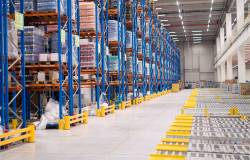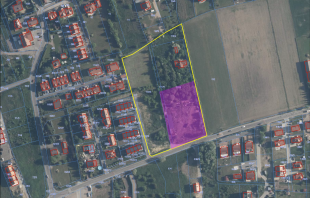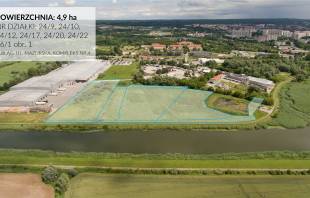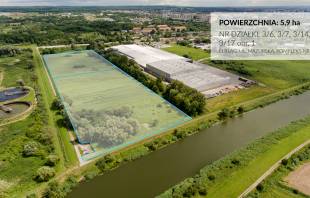The constantly growing number of online buyers is not without impact on the development of the warehouse market. Although the Polish market is growing more slowly than the European, the impact of e-commerce on the industry is becoming more and more noticeable.
– Our analysis shows that both now and in the future the most important factors shaping the logistics sector are and will be e-commerce and constantly evolving delivery methods. This is due to the significant increase in retail e-commerce in large and small cities around the world – explains Dwight Hotchkiss, Director of Logistics and Industrial Spaces in Colliers International, USA.
The European e-commerce market is growing at a rate of 15% per year and by 2020 it will occupy 10% of the retail market. Germany is close to achieving this result, and in Scandinavia, e-commerce accounts for 13.5% of the market. For now, Poland is far behind, with a score of 3.9% of the market share, but online sales are growing every year due to better web access. Currently, 65% of the Poles have access to the Internet, and 1/3 purchases goods online. Interestingly, many Poles who carry out such purchases live in small cities, with less than 20 thousand inhabitants, which results from a low variety of shops.
The logistics industry focuses on innovation
Customers making purchases online expect mainly speedy delivery to convenient places and easy return procedures. That is why the logistics industry rapidly develops new technologies. A few months ago, the public opinion was electrified to discover that the American tycoon, Amazon, will deliver goods with drones. Another idea from overseas is a special button, called Dash Button, that will make it possible to order a particular item without having to access the Internet with a single click. Delivery of goods within an hour was introduced in New York, US. In Europe, one-day delivery is becoming more and more popular, but it is an extra chargeable option. One-day delivery will be the biggest challenge for the industry over the next five years, according to the study of JLL and Prologis.
The emergence of parcel stations caused a big change in delivery methods in Poland, because these machines allow people to pick up goods at a convenient location and at a convenient time. In Poland, where the main suppliers of this type of services are InPost and Poczta Polska, approximately 11% of online buyers decide to pick up their goods from parcel stations. The possibility to pick up parcels easily, without the necessity to arrange appointments with couriers, is of great importance, because often the most problematic part of an online transaction is contact with delivery companies.
New demand for warehouse spaces
- The total modern warehouse supply in Poland currently amounts to 9.6 million square metres. These are the projects that largely meet the expectations of e-commerce tenants. Sometimes developers adapt their existing projects to the specific needs of customers, adding entresols or increasing the power of power systems. Also tailor-made investments are possible – explains Paweł Sapek, Member of the Management Board, Head of Prologis in Poland.
E-commerce needs several types of storage spaces to service customers. These are, among others, online procurement service centres, courier hubs, sorting facilities, urban logistic centres, centres for handling returns, but also warehouses for food sold online. The results of the survey carried out by JLL among logistics operators and retail chains in Poland indicate that within next five years 71% of the logistics operators will need centres for handling returns. Quick and hassle-free returns can build the brand of a company, as for example in the case of Zalando, offering free returns. Experts say the Polish market is ready for these challenges.
-Suburban parks will remain the best locations suitable for distribution hubs, but tenants will also direct their attention to urban logistic centres and SBU objects – says Paweł Sapek.
Over the next five years, e-commerce will require new warehouse spaces. The demand will be generated by start-ups, but also by traditional retail chains more and more often engaged in online sales. Another group will be companies with customer service departments located in Poland, like Amazon, which has three warehouses in Poland, even though it does not sale in our country. Poland is interesting for Western tenants because of low rent prices, more flexible labour law, and lower financial demands of workers.
- E-commerce has a chance to drive the demand on warehouse space in the years to come. Assuming that the value of e-commerce in Poland will grow at a rate of 15% per year, we estimate that by 2020 e-commerce companies may rent 700.000 square metres of warehouses – says Jan Zombirt, Director of Market Research and Consulting Department in JLL.
However, we should be aware that e-commerce, dominated by such sectors as fashion, household appliances, stationery, and books, does not compromise traditional trade, at least for now. Shops will not transform into show-rooms, showing only samples of goods.
- Despite the dynamic development of e-commerce, customers will still be willing to shop in malls. All this creates an opportunity for growth for shops operating in omnichannel model. Integrating online and off-line sales allows not only to present the available product range, but also to purchase goods from anywhere via mobile devices – says Renata Kusznierska, Director of Commercial Space Rental Department CEE, Cushman&Wakefield.
(fot. materiał prasowy)









































